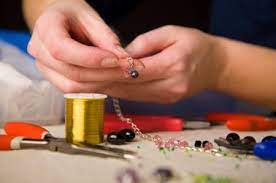Jewelry has been an integral part of human civilization for centuries, serving as more than just embellishments. Beyond their aesthetic appeal, Jewelry repair pieces hold cultural, emotional, and symbolic significance, making them timeless artifacts that transcend generations. In this article, we will explore the rich history, diverse styles, and evolving trends of jewelry that continue to captivate hearts worldwide.
A Glittering History:
The story of jewelry dates back to ancient civilizations, where it was crafted for both functional and ornamental purposes. Archaeological discoveries have unveiled exquisite pieces from ancient Egypt, Mesopotamia, and Rome, showcasing a remarkable mastery of craftsmanship. Whether fashioned from precious metals, gemstones, or organic materials, these early artifacts reflected the cultural values and social status of their wearers.
Cultural Significance:
Jewelry has played a pivotal role in expressing cultural identity and societal roles throughout history. Different cultures have distinct preferences for materials, designs, and symbols. From the intricate gold jewelry of ancient Egypt to the symbolic motifs in Indian jewelry, each piece carries a narrative of its own. In some societies, jewelry serves as a rite of passage, marking significant life events such as weddings, births, or coming-of-age ceremonies.
Materials and Techniques:
The art of jewelry-making involves a myriad of materials and techniques, from traditional handcrafting to cutting-edge technologies. Precious metals like gold, silver, and platinum remain perennial favorites, while gemstones such as diamonds, rubies, sapphires, and emeralds add a vibrant spectrum of colors. Modern innovations, including 3D printing and computer-aided design, have revolutionized the industry, allowing for intricate designs and personalized creations.



